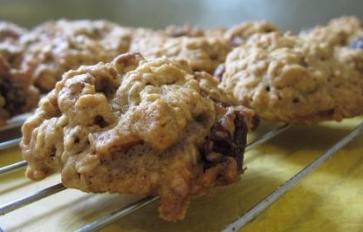
For those of us with cold winters, cold fingers and toes are often a problem when we’re outside playing or working. For lots of us, this can be downright painful, aside from the fact that our hands don’t seem to want to work properly when cold.
It doesn’t even have to be winter to notice poor circulation to the extremities. Some folks seem to always have cold hands and feet. I’ve even had elderly clients whose frigid feet kept them up at night.
What’s one to do aside from warm socks and gloves? There are some great herbs to turn to for using internally or externally. All of these herbs act by increasing peripheral blood flow, bringing blood warmed by our core out to our extremities. Note that because of their “moving” nature, extracts of these herbs shouldn’t be used during pregnancy.
1. Cinnamon (Cinnamomum species)
Cinnamon not only tastes great and sends warm blood to those cold fingers and toes, but it feels warm due to components of its aromatic oil such as cinnamaldehyde. Don’t use the essential oil, though. It’s too strong and is a skin irritant. Instead, some folks put powdered cinnamon in their socks, where the cinnamon helps to dilate the capillaries near the surface of your toes to bring in more blood flow, while the cinnamon itself imparts a warm feeling. You could put it in your gloves, too, but then you need to remember not to rub your eyes later!
My favorite way to use cinnamon is to make an extract and take doses every so often while I’m out and about in the cold.
How to Make Cinnamon Extract
- Fill a small jar about halfway with either cinnamon granules or chopped up cinnamon sticks. Don’t use cinnamon as a powder for this.
- Mix some Everclear or other 190 proof alcohol (I use organic cane alcohol) with water: 2/3 alcohol and1/3 water. (For example, 2 cups alcohol plus 1 cup water).
- Add enough of the alcohol/water mix to the cinnamon to cover it by about 1/2 inch.
- Put the lid on and set the jar somewhere dark for 2 weeks. Shake it every once in a while.
- Strain it and put the liquid in a dark dropper bottle. You can carry a small bottle with you when you’re out playing.
- For dosing, I use 5-10 drops in about an ounce of water or other liquid (hot cocoa would be good!). It’s going to be spicy, so you may not want to squirt it directly into your mouth.
2. Prickly Ash (Zanthoxylum americanum)
This is a very effective herb to use orally, though it doesn’t taste good and it makes the tongue tingle the same way that a good echinacea extract will. Prickly ash is stimulating and blood moving, so much so that herbalists traditionally have used it for support with Raynaud’s disease where circulation to fingers and toes is impaired. Within about 10 minutes of taking it, I can feel my cold toes and fingers warming up. I like to cross country ski and I usually carry a bottle of Prickly Ash extract in my pocket.
How to Make Prickly Ash Extract
You can make an extract of dried prickly ash, obtainable from reputable herb shops online, or maybe even at a local herb shop. Just follow the same instructions as for cinnamon. Or you can buy it as a liquid extract online. (Same for cinnamon, actually, but it’s fun and less expensive to make your own medicine.)
Prickly ash is also supportive of healthy joints…a nice side effect if you’re using it regularly while outside working or playing. Adding a bit of cinnamon extract to your prickly ash extract will make it taste marginally better, but you’ll still have that weird tingling on your tongue.
3. Ginger (Zingiber officinale)
Ginger is a great one to use topically as a rub for cold hands and feet. Like cinnamon, ginger will improve circulation to fingers and toes. Also like cinnamon, the aromatic oil of ginger contains components, like zingerone, that feel warm on the skin.
How to Make Ginger Infused Oil
You can make an infused oil of dried ginger following the instructions here. Or you can go the easy route and pick up some good quality ginger essential oil and add about 10-12 drops to an ounce of carrier oil. Sesame oil is warming, so that would be a good carrier, but any oil will do…olive, grapeseed, etc.
Either way, simply rub down your feet/hands before heading out. If you’re going to be out for more than a couple hours, bring a small bottle with you to reapply. Or keep it next to the bed if your cold feet wake you up at night. And it smells really nice.
Bundle up and stay warm!








